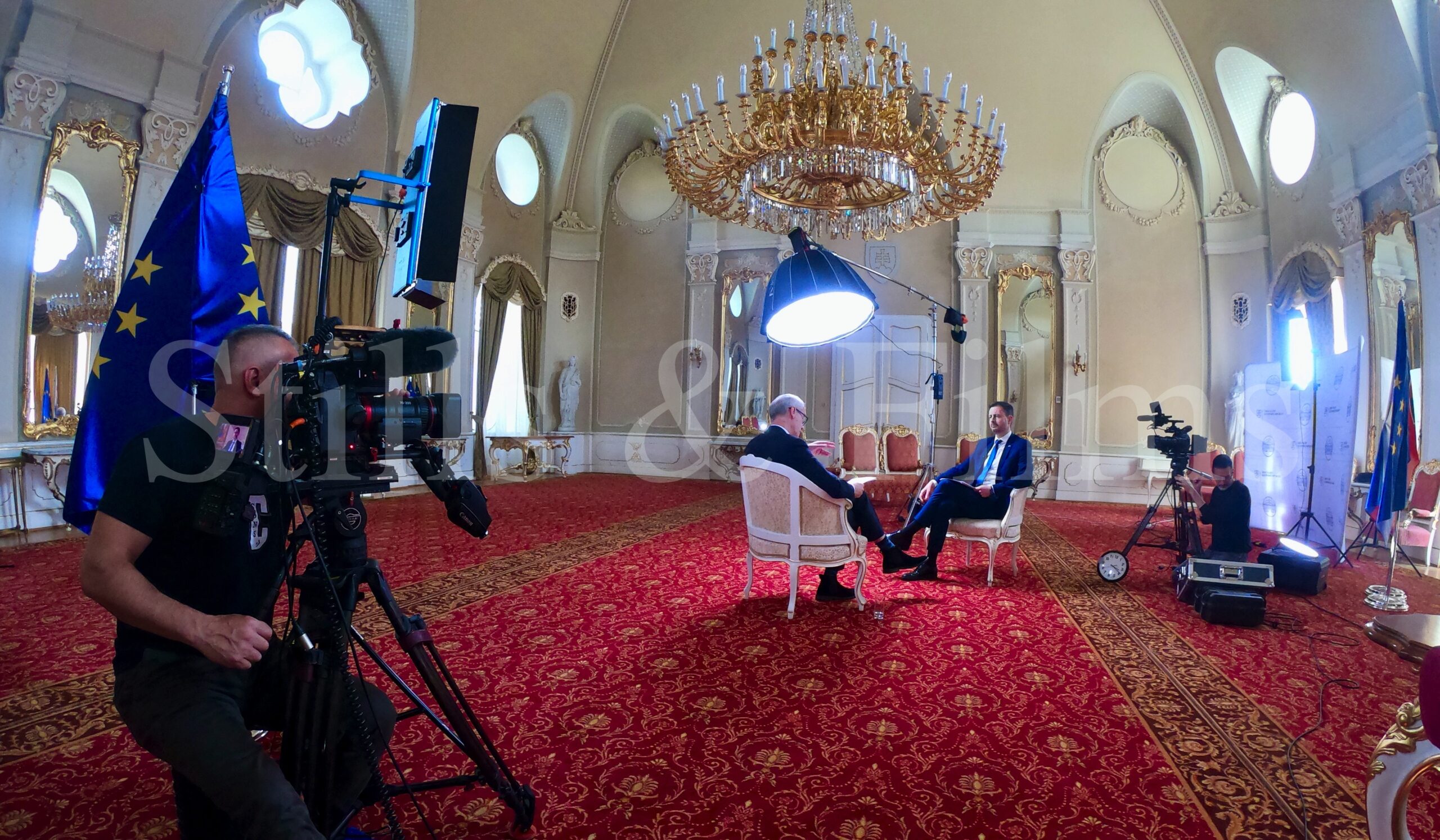Guide to Lighting Setups for Video Production

Interviewing prime minister Heger of Slovakia for BBC’s Hard Talk in Bratislava, Slovakia. This required a special lighting for video production “BBC style”.
Lighting plays a crucial role in video production, as it can greatly affect the overall look and feel of a video. Whether you’re a beginner or an experienced filmmaker, understanding how to set up and manipulate lighting can significantly enhance the quality of your video productions. In this comprehensive guide, we will walk you through the basics of lighting setups for video production, covering essential techniques, tools, and tips to help you achieve professional-looking results.
Understanding the Basics of Lighting
Before diving into specific lighting setups, it’s essential to understand the fundamental principles of lighting for video production. Light quality, direction, intensity, and color temperature are key factors to consider when setting up your lighting. Here’s an overview of these important concepts:
Light Quality: The quality of light refers to how hard or soft the light appears. Soft light creates gentle shadows and is often preferred for a flattering, natural look, while hard light produces sharp shadows and can create a more dramatic effect.
Light Direction: The direction of light determines how shadows fall on your subject. Front lighting illuminates the subject evenly, while side lighting can create depth and dimension. Backlighting adds separation between the subject and the background.
Light Intensity: The intensity of light refers to how bright or dim the lighting is. Adjusting the intensity of light can help set the mood and draw attention to specific areas in the frame.
Color Temperature: Light has a color temperature measured in Kelvin, which affects the overall color cast of your video. Understanding color temperature can help you achieve a consistent and natural-looking color balance in your footage.
Essential Lighting Equipment
To set up an effective lighting scheme for your video productions, you will need the right tools. Here are some essential lighting equipment options commonly used in the industry:
Key Light: The key light is the primary light source that illuminates your subject. It provides the main light and sets the overall tone for your scene.
Fill Light: The fill light helps to fill in the shadows created by the key light, reducing the overall contrast in the scene and providing a more even lighting balance.
Backlight: The backlight, also known as a rim or hair light, shines on the subject from behind, creating separation between the subject and the background and adding depth to the shot.
Diffusion and Reflectors: Diffusion materials help soften harsh light, while reflectors bounce light back onto the subject, filling in shadows and enhancing the illumination.
Lighting Stands and Mounts: Sturdy lighting stands and mounts are essential for positioning and securing your lights in place to achieve your desired lighting setup.
Basic Lighting Setups
Now that you are familiar with the fundamental concepts and equipment, let’s explore some common lighting setups used in video production:
Three-Point Lighting: The three-point lighting setup is a classic lighting configuration that consists of a key light, fill light, and backlight. This setup provides balanced, dimensioned lighting on the subject while creating depth and separation between the subject and the background.
Rembrandt Lighting: Rembrandt lighting is characterized by a triangle-shaped light pattern on one side of the subject’s face. To achieve this setup, position the key light at a 45-degree angle to the subject, creating a distinctive light pattern that adds depth and drama to the shot.
High-Key Lighting: High-key lighting is a bright, evenly lit setup commonly used in music videos, commercials, and fashion shoots. In this setup, the overall scene is well-lit with minimal shadows, creating a clean, vibrant look.
Low-Key Lighting: Low-key lighting is the opposite of high-key lighting, featuring dark shadows and high contrast. This setup is often used in dramatic or moody scenes to create a mysterious or suspenseful atmosphere.
Tips for Effective Lighting
Achieving professional-looking lighting setups requires practice and attention to detail. Here are some key tips to help you enhance your lighting skills:
Experiment with Light Placement: Move your lights around and adjust their angles to see how different positions affect the lighting on your subject. Small changes in light placement can dramatically alter the mood and look of your shot.
Use Light Modifiers: Softboxes, umbrellas, and diffusion panels can help soften harsh light and create a more flattering, natural look on your subject. Experiment with various light modifiers to achieve the desired effect.
Watch Your Shadows: Pay close attention to the shadows cast by your lights, as they can reveal the direction and quality of the light. Position your lights strategically to control the shadow patterns and ensure a well-balanced lighting setup.
White Balance Adjustment: Proper white balance ensures that your colors appear accurate and consistent in your video footage. Adjust the white balance settings on your camera or use color correction tools in post-production to achieve a cohesive color palette.
Mastering lighting setups is a fundamental aspect of video production that can greatly impact the quality and visual appeal of your projects. By understanding the basics of light quality, direction, intensity, and color temperature, as well as utilizing essential lighting equipment and experimenting with different setups and techniques, you can elevate your video productions to a professional level. With practice, creativity, and attention to detail, you can create visually stunning and compelling videos that capture the viewers’ attention and leave a lasting impression.


